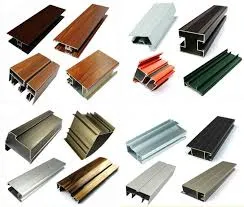foundry work
The Art and Science of Foundry Work
Foundry work is a fascinating blend of art and science, where metal meets craft. This age-old practice involves the casting of metal into desired shapes and forms, a process that has been refined over centuries. From ancient civilizations to modern factories, foundry work has played a crucial role in the development of tools, machinery, and artistic metalwork.
At its core, foundry work begins with the selection of raw materials, typically metals like iron, aluminum, or bronze
. The choice of metal significantly influences the properties of the final product, such as its strength, weight, and durability. Once the appropriate metal is chosen, it is melted in a furnace at high temperatures until it becomes a liquid. This stage requires precision, as different metals have varying melting points. For instance, aluminum melts at around 660 degrees Celsius, while iron requires temperatures of about 1,538 degrees Celsius.The melted metal is then poured into a mold—a hollow cavity that defines the shape of the final product. Molds can be made from various materials, including sand, metal, or ceramic, depending on the desired finish and complexity of the item being produced. Sand casting, one of the most common methods, involves packing sand around a pattern, which is then removed to leave a cavity for pouring the molten metal. The mold is left to cool, allowing the metal to solidify and take on the shape of the cavity.
foundry work

Once the metal has cooled and set, the newly formed piece is removed from the mold. This stage often requires finishing processes such as grinding, sanding, or polishing to achieve the desired surface quality. Additionally, inspection for defects is crucial, as any imperfections can undermine the integrity of the final product. Techniques like X-ray or ultrasonic testing are employed to assess the internal structure of the castings, ensuring that they meet safety and quality standards.
The versatility of foundry work extends beyond manufacturing functional components; it can also produce intricate artistic pieces. Sculptors and artisans utilize foundry techniques to create stunning metal sculptures, jewelry, and decorative items. This artistic aspect adds a layer of creativity to the otherwise technical world of metal casting. Artists often experiment with different metal alloys and casting methods, resulting in unique textures and finishes that can elevate their work to a higher aesthetic level.
In recent years, advancements in technology have revolutionized the foundry industry. Computer-aided design (CAD) software allows for precise modeling of components before they are cast, reducing material waste and enhancing accuracy. Furthermore, innovations in 3D printing have enabled the creation of complex molds that were previously impossible to produce, paving the way for new designs and innovations.
In conclusion, foundry work is an essential discipline that combines ancient techniques with modern technology. It requires a deep understanding of materials, processes, and artistic vision. Whether creating utilitarian items or breathtaking sculptures, the foundry continues to be a vital part of both industry and art, reflecting human ingenuity and creativity throughout the ages. As we move forward, the foundry industry is poised to embrace new technologies while preserving the rich traditions that have shaped it.
-
Wrought Iron Components: Timeless Elegance and Structural StrengthNewsJul.28,2025
-
Window Hardware Essentials: Rollers, Handles, and Locking SolutionsNewsJul.28,2025
-
Small Agricultural Processing Machines: Corn Threshers, Cassava Chippers, Grain Peelers & Chaff CuttersNewsJul.28,2025
-
Sliding Rollers: Smooth, Silent, and Built to LastNewsJul.28,2025
-
Cast Iron Stoves: Timeless Heating with Modern EfficiencyNewsJul.28,2025
-
Cast Iron Pipe and Fitting: Durable, Fire-Resistant Solutions for Plumbing and DrainageNewsJul.28,2025
-
 Wrought Iron Components: Timeless Elegance and Structural StrengthJul-28-2025Wrought Iron Components: Timeless Elegance and Structural Strength
Wrought Iron Components: Timeless Elegance and Structural StrengthJul-28-2025Wrought Iron Components: Timeless Elegance and Structural Strength -
 Window Hardware Essentials: Rollers, Handles, and Locking SolutionsJul-28-2025Window Hardware Essentials: Rollers, Handles, and Locking Solutions
Window Hardware Essentials: Rollers, Handles, and Locking SolutionsJul-28-2025Window Hardware Essentials: Rollers, Handles, and Locking Solutions -
 Small Agricultural Processing Machines: Corn Threshers, Cassava Chippers, Grain Peelers & Chaff CuttersJul-28-2025Small Agricultural Processing Machines: Corn Threshers, Cassava Chippers, Grain Peelers & Chaff Cutters
Small Agricultural Processing Machines: Corn Threshers, Cassava Chippers, Grain Peelers & Chaff CuttersJul-28-2025Small Agricultural Processing Machines: Corn Threshers, Cassava Chippers, Grain Peelers & Chaff Cutters












